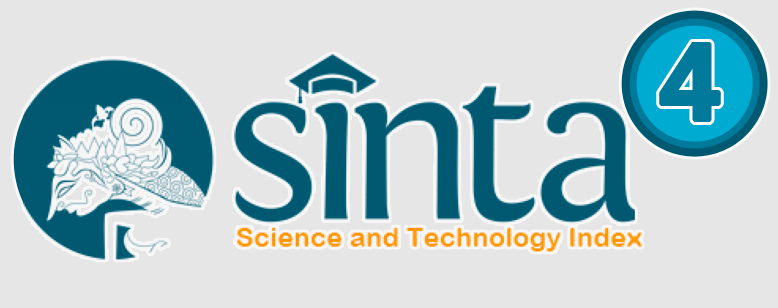Efektivitas Konsentrasi Propolis terhadap Daya Hambat Bakteri Streptoccous Pyogenes
Effectiveness of Propolis Concentration on the Inhibitory Power of Streptoccous Pyogenes Bacteria
Abstract
Streptococcus pyogenes merupakan bakteri gram negatif. Streptococcus pyogenes adalah bakteri patogen saluran pernapasan bagian atas yang dapat menyebabkan berbagai macam penyakit, dan penyebab paling umum dari faringitis. Propolis adalah lem lebah, bahan resin lengket yang dilepaskan dari berbagai sumber tanaman seperti eksudat kuncup, bunga, dan daun yang dimodifikasi oleh sekresi lebah. Kandungan flavonoid dalam propolis memiliki sifat antibakteri. Penelitian menggunakan konsentrasi propolis 15%, 35%, 55%, 65%, dan 80% dengan metode difusi. Penelitian bertujuan menguji efektivitas konsentrasi propolis sebagai daya hambat bakteri Streptococcus pyogenes. Desain penelitian yang digunakan adalah penelitian eksperimen kuantitatif dengan pendekatan post test only control group design. Analisis data yang digunakan adalah uji analysis of varians (Anova) satu arah. Hasil propolis dengan konsentrasi 35% dan 80% efektif terhadap daya hambat bakteri Streptococcus pyogenes. Hasil pengujian propolis dengan konsentrasi 15%, 35%, 55%, 65% dan 80% memiliki daya hambat yang berbeda-beda. Perbedaan dalam centimeter antara P1 dengan P2, P3, P4, dan P5 adalah 0,955, 1,225, 1,165, 1,08, dan 1,39. Amoxicillin memiliki rata-rata zona hambat sebesar 0 cm, menandakan zona hambat amoxicillin tidak ada daripada propolis. Kesimpulan hasil pengujian membuktikan adanya pengaruh efektivitas konsentrasi propolis terhadap daya hambat bakteri Streptococcus pyogenes.
References
Arga permana, Muhammad Arief. 2014. Uji Antibakteri Fraksi Etil Asetat Daun Sirsak (Annona Muricata Linn) Terhadap Streptococcus Pyogenes Secara In Vitro. Fakultas Kedokteran, Universitas Islam Bandung.
Braakhuis, Andrea. 2019. Evidence on the Health Benefits of Supplemental Propolis Nutrients 2019, 11, 2705.
Erywiyatno, Leanidha. 2012. Pengaruh Madu Terhadap Pertumbuhan Bakteri Streptococ- cus Pyogenes. Analis Kesehatan Sains Volume 01 No 01. 2012 ISSN 2302-3635.
Hasanah, Khoirotunnisa Uswatun. 2012. Uji Daya Antifungi Propolis Terhadap Candida Albicans dan Pityrosporum Ovale. Fakultas Kedokteran Universitas Muhammadiyah Surakarta.
Kanwal S, Vaitla P. 2022. Streptococcus Pyogenes. In: StatPearls. StatPearls Publishing, Treasure Island (FL); 2022. PMID: 32119415.
Manik, Feronica. Hertiani, Triana. Anshory, Hadi. 2014. Analisis Korelasi Antara Kadar Flavonoid dengan Aktivitas Antibakteri Ekstrak Etanol dan Fraksi Fraksi Daun Kersen (Muntingia calabura L.) Terhadap Staphylococcus Aureus. KHAZANAH, Vol. 6 No.2 Januari 2014.
Milah, Nihayatul. 2017. Pengaruh konsentrasi antibakteri propolis terhadap pertumbuhan bakteri streptococcus pyogenes secara in vitro. Skripsi. Fakultas Matematika dan Ilmu Pengetahuan Alam Universitas Negeri Semarang.
N Milah., S H Bintri., D Mustikaningtyas. 2016. Pengaruh Konsentrasi Antibakteri Propolis terhadap Pertumbuhan Bakteri Streptococcus pyogenes secara In Vitro. Life Science. Vol. 5. No. 2.
Nofembri, Mitra. 2017. Efek Propolis dan Jeruk Nipis terhadap Pertumbuhan Bakteri Staphylococcus Aureus dan Streptococcus Pyogenes secara In Vitro, Jurnal Kesehatan Andalas. 2017; 6(3).
Przyby?ek, I.; Karpi?ski, 2019. T.M. Antibacterial Properties Propolis. Molecules 2019, 24, 2047.
Purba O, Indriyanto. Bintoro, A. 2014. Perkecambahan benih aren (arenga pinnata) setelah diskarifikasi dengan giberelin pada berbagai konsentrasi. Jurusan Kehutanan Fakultas Pertanian Universitas Lampung, Lampung.
Tambekar DH & Dahikar SB. 2010. Exploring antibacterial potential of some ayurvedic preparations to control. J Chem Pharmaceut Res 2(5): 494-501.
Tasha L. Sturm. 2009. Kirby-Bauer disk diffusion susceptibility test. Visual Resources. American Society for Microbiology, Washington, DC. 29 September 2014.
Zeniusa, Popi. Ramadhian, Ricky. Nasution, Hamidi. Nisa, Karima. 2019. Uji Daya Hambat Ekstrak Etanol Teh Hijau Terhadap Escherichia coli Secara In Vitro. Jurnal Fakultas Kedokteran Universitas Lampung Vol 8 No 2 Desember 2019.
Copyright (c) 2023 EMILIA DEVI DWI RIANTI

This work is licensed under a Creative Commons Attribution-ShareAlike 4.0 International License.
Authors who publish with this journal agree to the following terms:
- Authors retain copyright and grant the journal right of first publication with the work simultaneously licensed under a Creative Commons Attribution-Non Commercial License that allows others to share the work with an acknowledgment of the work's authorship and initial publication in this journal.
- Authors are able to enter into separate, additional contractual arrangements for the non-exclusive distribution of the journal's published version of the work (e.g., post it to an institutional repository or publish it in a book), with an acknowledgment of its initial publication in this journal.
- Authors are permitted and encouraged to post their work online (e.g., in institutional repositories or on their website) prior to and during the submission process, as it can lead to productive exchanges, as well as earlier and greater citation of published work.
The content of this website is licensed under a Creative Commons Attribution-ShareAlike 4.0 International (CC BY-SA 4.0) license. 












